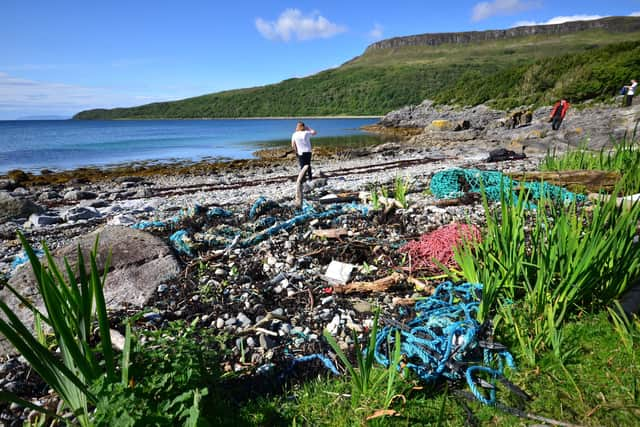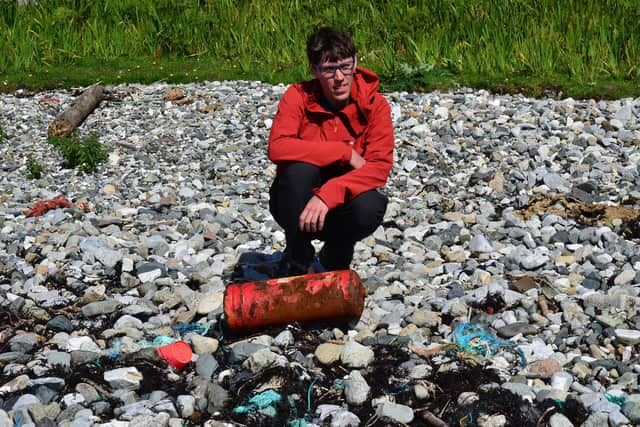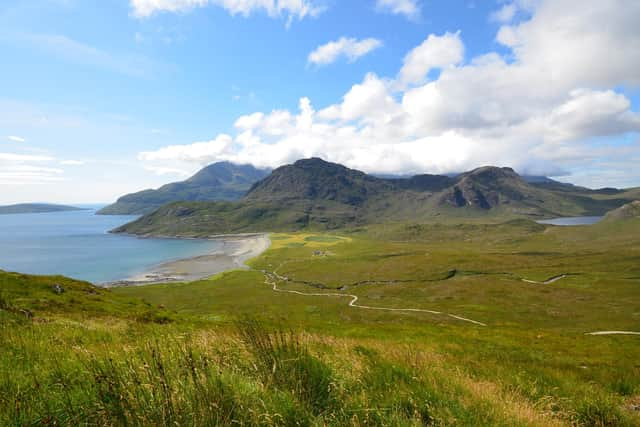Over the sea to Skye: How rubbish from all over the world is travelling to Scotland’s famous Misty Isle
Thousands of used shotgun cartridges from Canada, a fire extinguisher from China, food packaging from the US, a wheelie bin and huge fishing nets.
These are just a few of the man-made items which have been washing up shores around one of Scotland's most famous islands, blighting the landscape and posing a danger to wildlife.
Advertisement
Hide AdAdvertisement
Hide AdNow a new short film has been made to highlight the extent of the sea-borne plastic pollution problem on the Isle of Skye – an issue flagged in an academic paper published more than 50 years ago.
Dr Tom Stanton, a geographer and environmental scientist from Loughborough University, was fascinated to discover a report from 1972 that charted synthetic rubbish found on two of Skye’s most remote beaches and warned of future risks.
Professor Gerald Scott’s research described three main types of litter found – domestic and industrial waste, agricultural packaging and maritime debris.
He predicted pollution would only grow as retailers increasingly used plastics to package goods and that new, durable synthetic materials being developed would add to the “effluent” building up on Skye’s shores.


Shocked at the findings, Dr Stanton decided to visit the island to investigate what, if anything, had changed and whether the professor’s prophesies were accurate.
So in August last year, he and more than a dozen colleagues headed to the island, where they – assisted by local groups – spent two weeks surveying the coastline to assess the scale of litter brought in from the sea.
The results were horrifying, although perhaps not unexpected.


“It’s easy to see why these beaches are so treasured and why they are so popular,” Dr Stanton said. “Skye is one of the most beautiful places I’ve ever been. But it was very disheartening to see just how much marine litter was on some of these beaches.”
Advertisement
Hide AdAdvertisement
Hide AdKathryn MacRae, lead gardener at Clan Donald Estate and Armadale Castle, helped with the project. She has found everything from fishing tackle to bathtubs on the beaches she oversees at Ostaig.
“You walk onto the beach and it’s shocking, the level of waste that has ended up in this place because of the tides,” she said.


The film, 50 years of litter on Skye, follows the team as they discover isolated beauty spots – such as Camasunary, an idyllic bay popular with walkers – that are carpeted in plastic detritus.
The team cleared around two tonnes of rubbish from nine locations, logging nearly 14,000 individual pieces. More than 1,000 items were found in each square metre of ground at some of the worst spots.
The majority was synthetic rope, nets and plastic fishing implements – the same type as described by Prof Scott in 1972. And some waste had travelled thousands of miles across the ocean.
Dr Stanton and the team hope their work can help push for greater action to tackle plastic litter.
“It’s really hard to comprehend your personal connection to the pollution on these remote coastlines,” he said. “We hope that the film will go some way to highlighting how the actions of people who do not live near to these beaches, or visit them, are connected to environments like this.”
The film, 50 years of litter on Skye, is being premiered at a special event on March 21 at Loughborough University and online.
Comments
Want to join the conversation? Please or to comment on this article.